#vividh
Explore tagged Tumblr posts
Photo

//VIVIDH - Celebrating differences - This illustration won me the second prize at this year's digital art contest at @petrichor.iitpkd , who continue to provide digital artists like me a platform to prove their skills. - - /tags: #transrights #transpride #pride🌈 #lgbtq🌈 #lgbtindia #queerart #transart #vividh #petrichor #iitpalakkad #digitalart #digitalillustration #digitalartcontest #embrace #celebratingdifferences #fatherdaughter #love #art (at Mumbai, Maharashtra) https://www.instagram.com/p/Co7f9QTocNl/?igshid=NGJjMDIxMWI=
#transrights#transpride#pride🌈#lgbtq🌈#lgbtindia#queerart#transart#vividh#petrichor#iitpalakkad#digitalart#digitalillustration#digitalartcontest#embrace#celebratingdifferences#fatherdaughter#love#art
3 notes
·
View notes
Text
submit
Once you see this the only choice is submission. You can’t take your eyes off the suit and you fall under his spell.
images courtesy Vividhe (check it out!)



#hypno slave#gay master#hypnosis kink#gay hypnosis#gay hypno#gay hypnotized#hypnokink#slaveboy#gay lycra
59 notes
·
View notes
Text
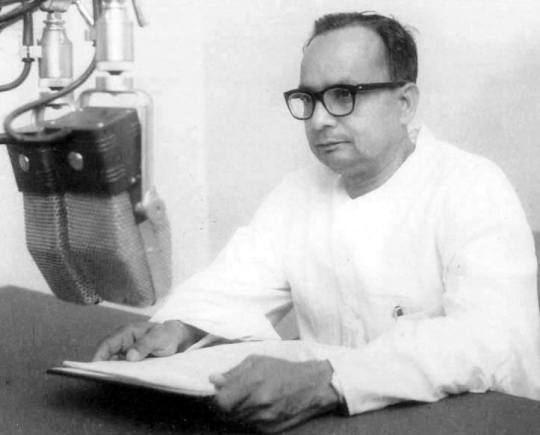
Today, we remember Pandit Narendra Sharma on his birth anniversary. He was a famous poet, wrote songs for Hindi movies, and started the radio channel Vividh Bharati (02/28).
Pandit Sharma was known for his beautiful poetry, songwriting, and deep knowledge of Hindi and Urdu languages. He brought a special style to Indian movies by mixing old Indian poetry styles with the beauty of Urdu poetry. He played a big role in making the radio channel Vividh Bharati very popular when it was struggling, bringing its listeners to nearly 35 crore people.
He wrote unforgettable songs for movies like “Jyoti Kalash Chhalke” from “Bhabhi Ki Chudiyan” in 1961, and both “Yashomati maiya se bole nandlala” and the main song “Satyam Shivam Sundaram” from the movie “Satyam Shivam Sundaram” in 1979.
Pandit Sharma was born on February 28, 1913, in Jahangirpur, Uttar Pradesh. He studied English literature at Allahabad University and was part of India’s fight for independence. He was friends with famous poet Harivanshrai Bachchan and wrote poetry in Hindi that many people loved.
In 1942, he was invited to Bombay (now Mumbai) to write songs for movies. His first movie as a songwriter was “Hamaari Baat” in 1943, starring Raj Kapoor. He also suggested the stage name ‘Dilip Kumar’ for the actor Yusuf Khan, a name that became very famous in Indian cinema. His songs, especially when sung by Lata Mangeshkar, became very popular.
Apart from movies, Pandit Sharma’s work in radio was groundbreaking. In 1952, India’s Prime Minister Jawaharlal Nehru asked him to help start Vividh Bharati on All India Radio, which became a huge success and had a massive audience by 1970. Some famous radio shows, like Binaca Geetmala, became very popular because of him. He worked with Vividh Bharati until he retired.
Pandit Sharma also wrote many religious songs and poems outside of movies. One of his most famous songs is the title track of the movie “Satyam Shivam Sundaram,” which talks about beauty and truth. This song got him a nomination for a Filmfare award.
He passed away on February 11, 1989, but his work continues to inspire many with its deep messages about life and beauty.
2 notes
·
View notes
Text
Names generated from Irish forenames, 6 letters long
Africh Aichán Aidhbh Aidhán Ainden Aindás Ainion Airean Aithín Aitlís Aitrín Ambris Amhala Amhall Amhlan Amonna Anaith Annéar Aodhna Aodhre Aodóis Aoiles Aoilín Aoimha Aonait Aortúr Arbhin Arbrid Arghus Arlait Arnárd Arrdra Aíbhin...
Baigne Barnán Basael Basnal Beagán Beamhe Beanya Bearne Beasán Beárós Blaure Bláill Bracha Breach Breart Brench Briodh Brionn Broibh Brócht Brónán Buarra Cachán Caigne Cailla Cailís Caithg Calach Caodha Caogán Caoibh Caoife Caoigi Caoire Cartúr Cathar Cathgh Chaonn Ciachí Ciadhe Ciagán Ciamus Ciarra Ciaríd Cinead Cionng Cionán Clinch Clomán Cobhal Cobhch Cobhin Cobhle Cobhán Cobhóg Coilís Coinng Colmón Comhne Comáin Conach Conait Concht Connán Conórd Corghe Coroil Coscar Críomh Cuaidh Cuainn Cuilín Cyrian Cyrich Cúchán Cúmhal Cúmhán Dabbán Dabhán Daghan Daghna Daglán Dailín Daithí Damhal Damhán Damhín Damhóg Darnal Daveen Dearah Dearne Dearry Dearás Declia Declán Deigha Deilín Deilís Diance Diarbh Dighne Doilín Domhín Domóra Donach Donair Donnín Donárd Dubhal Dubhan Dubhra Dubhre Dubhri Dubhín Déarón Dúnaid Eachán Eachín Eadhla Eadnal Eaglán Eagóir Eamhan Eamonn Eanier Earlas Eibhán Eibébh Eidhán Eidict Eighal Eighra Eighín Eilinn Eiléig Eilíne Eimher Eircán Eirear Eoghín Eóilin Fachar Fachán Fearna Fearás Feilín Feirch Feithy Feitiú Felinn Ferean Fernán Fiacht Fiadhn Fianán Fiardh Findán Finear Fiodón Fionch Fionin Fionng Fithar Fitrah Flairí Flaith Flania Flaolm Flaure Fodaig Fodhán Fodhóg Forcán Fornán Frigne Froine Fáilix Fáinse Féimhe Fétann Fíoghe Fíogán Garmac Geanya Geilín Geirín Gláinn Gobhch Gortúr Grearn Grench Gréall Gréann Honghe Honian Horcán Iamhín Iarnín Iobhóg Iodhóg Ionnch Iósaid Iósean Ióseos Jernán Kyleán Lachal Lachán Laidha Lailín Lairiú Lairra Laoird Laolán Limhín Lochal Lochán Lochín Lomhín Lomhóg Lonnán Lorcht Lorgus Lornal Lorthy Lumhóg Machán Mailix Mailín Mainne Maltán Manach Mantán Maodón Maoire Maolch Maolán Maonán Meanán Mearna Meighe Mernam Mionán Mothín Muilín Muimer Muimín Muiren Muiriú Muirna Muirra Muirrd Muirín Máilís Máirna Míchal Mídear Naidha Neamhg Niadna Niagán Niaris Nichín Nielín Nisear Nistín Nisíle Nuadhn Nuaith Nuanya Nóilís Nórach Nórlan Odhach Odhain Odóine Oibeal Oilinn Oirtúr Osaoth Oscair Osteán Pearan Peasal Peiche Peigha Peighe Peigna Peigne Pilíos Proger Proill Proire Prosne Póirig Póirry Póisín Riarna Richán Righan Riocht Rislin Rislán Ristín Rochán Roclín Rogeit Roifra Roilín Rothín Ruadhe Ruaill Ruainn Ruaith Ruanne Ruanng Ruathg Ruathy Ruiren Réagán Réasal Ríogán Ríomán Rónach Rónaid Sachán Sadhna Sadhóg Saelín Samhán Sarbre Sarnán Sarnín Seanya Searla Senian Sephne Seárdh Siltán Sindás Sinngh Siodhe Sorair Sortín Séaghe Séamha Séamhe Séamhg Séarch Séardh Tadarí Tadhal Tadhbh Tadhna Tiasán Tighan Tighus Timeas Toilín Toinín Toirse Tornam Tracht Traith Trídín Tuaire Tuaith Uadhal Uadhna Uaithí Ualais Uallan Uaninn Uargus Uarnán Uiltim Uinnch Ultann Viacha Vilinm Vividh Áindre Áineas Ártigi Árónán Éadhan Éadhel Éadhna Éaghín Éaglán Éallán Éamhla Éamhán Éarath Éardgh Éibhid Éidhal Éiltad Éimhna Éimhán Éinnin Éirgus Éislán Éislás Éistín Émeall Émerrd Ídeach Ídeara Órfhín
0 notes
Text
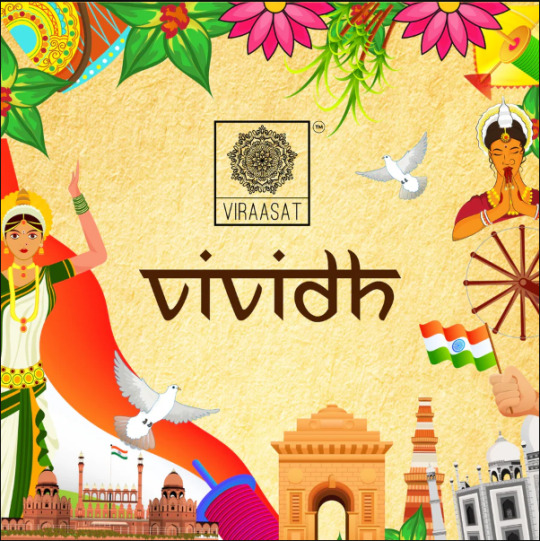
VIVIDH: Celebrating India’s Diverse Tapestry Through Contemporary Merchandise
India is a country known for its rich cultural heritage, diverse traditions, and vibrant landscapes, is now encapsulated in the VIVIDH collection. This innovative range of merchandise offers a colorful journey through India’s myriad customs, traditions, and colors, bringing the essence of the nation’s diversity into everyday life. VIVIDH is not just a collection; it is an experience that allows you to know India better through its vibrant, varied, and intriguing products.
A Tapestry of Traditions
India’s cultural diversity is unparalleled, and VIVIDH captures this essence through a variety of products that reflect the unique traditions of different regions. From the intricate designs of Rajasthani textiles to the elegant simplicity of Kerala’s kasavu sarees, each item in the collection tells a story of its origin. Handcrafted jewelry, pottery, and artifacts showcase the meticulous craftsmanship passed down through generations.
Colors of India
The VIVIDH collection is a celebration of color. India is renowned for its festivals and the riot of colors they bring. Whether it’s the vibrant hues of Holi, the golden glimmer of Diwali, or the serene whites of Pongal, VIVIDH incorporates these elements into its designs. The merchandise ranges from colorful apparel and accessories to home decor items that brighten up any space, reminiscent of India’s colorful streets and marketplaces.
Contemporary Twist on Tradition
While deeply rooted in tradition, VIVIDH brings a modern twist to its merchandise. The collection features contemporary designs that appeal to the new-age consumer while maintaining the authenticity of traditional Indian artistry. Modern silhouettes, innovative patterns, and functional designs make these products perfect for today’s lifestyle. For instance, traditional block prints are reimagined in chic dresses and scarves, while classic Indian motifs are adapted into stylish home decor pieces.
Cultural Narratives
Each product in the VIVIDH collection is more than just an item; it’s a narrative. The packaging includes information about the cultural significance and history behind each piece, providing a deeper understanding of India’s rich heritage. This educational aspect of VIVIDH not only enhances the appreciation of the product but also fosters a connection with the culture it represents.
Sustainable and Ethical
VIVIDH is committed to sustainability and ethical practices. The collection supports local artisans and ensures fair trade practices, empowering communities and preserving traditional crafts. The use of eco-friendly materials and sustainable production methods reflects a responsibility towards the environment and society.
Conclusion
The VIVIDH collection is a vibrant representation of India’s dazzling diversity. It brings together the country’s rich cultural heritage and modern sensibilities, offering a unique way to experience and appreciate the myriad traditions, customs, and colors of India. Whether you are looking for a stylish addition to your wardrobe, a unique home decor item, or a meaningful gift, VIVIDH has something special for everyone. Dive into the world of VIVIDH and discover the magic of India through its intriguing and beautiful merchandise.
0 notes
Text
मेरे चैनल को फॉलो करें
(vivaran) is veediyo mein, ham bhaarateey dhaarmikata kee samrddh tepestree mein gaharaee se utarenge. ham un vividh paramparaon, maanyataon aur aadhyaatmik prathaon ka pata lagaate hain jo bhaarateey sanskrti ka kendr hain. vedon kee praacheen shikshaon se lekar samakaaleen prathaon tak, jaanen ki kaise dharm bhaarateey logon ke jeevan aur pahachaan ko aakaar deta hai.
मेरे चैनल को फॉलो करें : https://youtube.com/@aantarikaraahasy?si=-BZRi1noFrl4FcvU
(sambandhit vishay)
hindoo dharm: utpatti, devata, anushthaan aur tyauhaar.
bauddh dharm: maulik siddhaant aur saanskrtik prabhaav.
jain dharm: darshan aur tapasvee prathaen.
sikh dharm: saamudaayik neenv aur paramparaen.
any dharm: bhaarat mein vividhata aur sah-astitv.
(samajhane ke lie dekhen)
aadhyaatmik jeevan mein mandiron aur pavitr sthaanon kee bhoomika. dhaarmik tyohaaron aur unake utsavon ka mahattv | dharm bhaarateey sanskrti, kala aur samaaj ko kis prakaar prabhaavit karata hai. duniya bhar kee sanskrtiyon aur dharmon ke baare mein adhik veediyo ke lie hamaare chainal ko laik, kament aur sabsakraib karana na bhoolen!
#india#भारतीयआध्यात्म#भारतीयधर्म#हिन्दूधर्म#बौद्धधर्म#जैनधर्म#सिखधर्म#आध्यात्मिकपरंपराएँ#भारतीयसंस्कृति#धार्मिकअनुष्ठान#भारतीयदर्शन#ध्यान#योग#आध्यात्मिकता#पूर्वीधर्म#धार्मिकत्यौहार#भारतीयमंदिर#प्राचीनज्ञान#आध्यात्मिकपथ.#वेदों#भागवदगीता
1 note
·
View note
Text
0 notes
Text
FURTHER EVIDENCE ON BRITISH DOMINION RAJ IN POST-1947 (SUPPOSEDLY INDEPENDENT) INDIA, VIA ‘MANAGEMENT & ULTIMATE CONTROL’ OVER INDIA’S & THE SUBCONTINENT’S POPULAR COMMUNICATION IE RADIO! ..........................................................................................................................................................THE ‘REAL REASON’ FOR THE RISE TO UNPARALLELED FAME, OF SRI LANKA’S ‘RADIO CEYLON’, OVER INDIA’S ‘ALL INDIA RADIO’!
A strange dichotomy in press or media workings from 50’s India, came to our attention at Indies, making us investigate it’s roots, & the revelations from it & deeper emerging links to the Indian panorama of then, is what’s presented in form of this blog.
Now all regular readers of Indie blogs, would’ve taken notice of the Indie revelation from month back, of the pre-1977 Indian Film Censors rule, of not allowing film shootings within the land, till every 3 reels of each film were made to pass thru & be certified by censors before proceeding ahead. In light of this, emerged another unrelated claim stating how twas the Indian Information & Broadcasting Min of 1950’s India, B.V. Keskar, I & B Minister from 1952-1962, that outright banned the broadcast of all Hindi songs in 1952, for supposedly being too crass & uncultured, thus paving way for the emergence & prosperity of India’s rival business, Sri Lanka’s state radio broadcast service ‘Radio Ceylon’ (most famous to audiences of today, for hosting Ameen Sayani’s ‘Binaca Geetmala’, a weekly Top 10/20 Hindi Film Songs rating & broadcast show) that became immensely popular on account of such ‘folly’ by Mr. Keskar. And this theory was bought by the nation enmasse, for Mr. Keskar being a known proponent of the classical arts, & who In an article in The Hindu (19 July 1953), had argued that “The country’s appreciation for classical music has fallen and was on the point of extinction, particularly in North India, & the onus of making his countrymen intimate with (classical music) that therefore was bestowed on AIR.” “We must make (ourselves) familiar with our traditional music," was what he’d declared. Now further research on the matter gives us no other direct quotes or even second-hand convos from Keskar on the matter of Hindi Film Songs being degenerative or a bad influence on Indian society, ever, anywhere! .. All such talk, attributing such motives to him, only appearing in independent (?) columns of journalists, assuming his self-asserted appreciation for Indian classical music as a direct potential assault on Hindi film Music, in some zero sum game, that being the decided motive for the AIR Film Music ban, no further questions thence to be asked! This theory may even have worked in unknowing & gullible 1950’s India, but to us 75 yrs later, armed with Google baba & other means of info, the knowledge of real facts, that smelt of something far more sinister or atleast shady to begin with- HOW WAS IT EVER POSSIBLE, THAT THE SAME I & B MINISTRY THAT OVERSAW, CERTAINLY SINCE INDEPENDENCE & ALSO BEFORE, WHAT SONGS WERE FIT TO BE TELECAST OR SCREENCAST (IE WITH VISUALS, MOREOVER) IN HINDI MOVIES OF THEN, WITH A METICULOUS MICROSCOPE, WOULD FIND THE SAME SONGS OBJECTIONABLE IN THEIR MERE PODCAST OR TRANSMISSION (W/O VISUALS), OVER A PUBLIC CARRIER ‘ALL INDIA RADIO (AIR)’ ALSO RUN ENTIRELY BY THE I & B MINISTRY??!! Further, we are told that AIR’s situation improved after Keskar was removed & AIR’s new ‘Vividh Bharati service” division was started, now allowing the playing of Hindi songs, thus gaining popularity, & finally beginning to bring in rewards to Indian public entrepreneurship. Only to learn upon some more research that: 1. Mr. B.V. Keskar was the I & B minister continuously for 10 yrs from 1952 – 1962, while ‘Vividh Bharati’ began services in October 1957! Ie. Keskar also oversaw the emergence of Vividh Bharati in AIR during his leadership. 2. It is learnt that parent body AIR still didn’t allow of advertising slots on this new ‘Vividh Bharati’ channel, even then, thus refusing the chance of generating revenue & sprucing up it’s programming & presentation. This infact reportedly continuing into early 1970’s.
All this while rival state broadcaster, Sri Lanka’s ‘Radio Ceylon’, was reportedly earning millions upon millions of rupees, via the biggest & hottest commodity of the nation since independence, in Sri Lanka or India – Radio! Far far more monopolistic in attracting the maximum audience & ad revenue & trade then, as one would imagine, on account of there being no rival modes of entertainment or mass enjoyment then! RADIO WAS UPTO TEN TIMES MORE PROFITABLE AND ATTRACTIVE & PRESTIGIOUS A VENTURE & A DOMINATING (& CONTROLLING) PUBLIC INFLUENCE, THAN EVEN THE TELEVISION OF TODAY!
Which brings one to the obvious question, as to why would the Indian Govt, allow the clearly most potentially impactful & most public interfacing & public controlling Ministry, take a string of the stupidest upon stupidest of decisions, one after the other, for upto years to decades on end, that too, & need it be said, with a rival & unimaginably successful & profitable & national coffer-bourgeoning business model, in just the neighbouring nation, using the Indians’ own intellectual property to increase their own nation’s wealth, all to India’s detriment!???? Ofcourse also to how the same supposedly Hindi Film music-phobic I & B Minister Keskar, had such a change of heart, to first unilaterally declare such a vastly unpopular & need I say, electorally impactful decision in 1952, & then do a 180 degree turn in just 5 yrs, & undo the same decision unilaterally in 1957, unquestioned or un-investigated upon further, forever thereafter! Btw. B. V. Keskar continues to be the longest serving I & B Min in Indian democratic history, having served on this post for a full 10 yrs, that’s 5 times more than the average term duration of 2 yrs for Ministers holding this post in India thereafter! Does anyone even remotely believe that Nehru of all people, SO hands-on in all his affairs, that his own 1950’s Finance Minister of all people, John Matthai, one of Indies Top 136 Greatest Personalities in the Known History of India incidentally, & one of the most important Cabinet posts in the Govt, resigned, writing an open letter of resignation to Nehru in 1950, alleging how Nehru’s Planning Commission headed by Nehru himself, had become a parallel Cabinet that’d turned the entire real Cabinet into mere petty registering authorities…could allow some unheard of & certainly nationally unknown Minister called B. V. Keskar to run riot with the dynamic national sentiment, not once but twice, & continue on with no say in the matter at all!?
https://indiafacts.org/complete-truth-jawaharlal-nehru-forced-john-mathai-resign/
This was not stupidity of the highest order, but certainly something far more sinister.
And a little further deep-dive, made matters far clearer indeed!
THIS WAS NOT ABOUT INDIAN BUSINESS OR SRI LANKAN BUSINESS, BUT BRITISH & AMERICAN BUSINESS ALL ALONG!
You see some research on ‘Radio Ceylon’ will tell you, how it took the shape of it’s most famous avatar, from the erstwhile ‘Colombo Radio’ that began transmission in 1925, only after the nation of Ceylon (now Sri Lanka) was officially granted Dominion Status by the British in 1948 just a year after the same as unofficially granted to India in 1947 (read earlier Indie blogs on India’s Dominion Status till atleast the late 1960’s, on Indies sm), that meaning all controlling authority, if not day-to-day operations, & certainly lotsa the decided revenues or rewards, from the nation’s activity, were to stay with the British Crown.
Further, how ‘Radio Ceylon’ acquired it’s operational strength thanks to the short-wave transmitters that were donated to Radio Ceylon, at the time of it’s dominion-independence, by the officers of the then Indian Gov General Louis Mountbatten’s earlier command, namely his position as Supreme Commander of the South- East Asia Command that Mountbatten held till 1946, & one officer in particular, Major Frank Courtney. During WW II, Frank Courtney was posted in India and assigned to the British Garrison at Bombay as the Signals Officer. The Allied Forces were spread far & wide, from the Middle East to the Far East and the Indian Peninsula in the centre, formed a very strategic location. Real time communications with the Allied Forces became paramount and an urgent need was felt to set up a Medium Frequency/High Frequency (MF/HF) transmitting station. FC was tasked with identifying a suitable location and equipment and setting up the same. After a thorough study he concluded that Colombo would be the ideal location and he proceeded with the project as directed. Just as the equipment arrived at Colombo the War ended and the equipment continued to lie in some warehouse in the port premises.
Frank Courtney, who was totally in the picture of the details & position of the MF/HF Transmitters, approached the new Government in Ceylon and proposed the setting up of a powerful radio station for their country. The Ceylon Government accepted his proposal and commissioned him to complete the project on a turn-key basis. That meaning, the Govt of Sri Lanka basically appointed Major Frank Courtney, Signals Officer of Mountbatten’s South-East Asia Command, as a large stakeholder & large part owner of Sri Lanka’s national radio service, that was also soon re-positioned as a full-fledged separate department of the Ceylon (Sri Lankan) Natl Govt.
Now given how Sri Lanka was legally a Dominion of Britain then (& continued to be till 1972 when officially became a Republic), & Mountbatten very much in control of India as Governor General in 1948, fair to say, this was in effect the British Crown acquiring rival legal ownership to the then illegal Indian radio-service ownership! .. In modern biz talk, many would call this, a potential way to convert black into white!
And that is how Radio Ceylon came into being. The most powerful transmitting station in this part of the world!
1. https://en.wikipedia.org/wiki/Radio_Ceylon
2. https://pediahut.com/radio-ceylon/
3. https://www.historyforpeace.pw/post/the-strange-and-amusing-history-of-indian-commercial-radio
4. https://www.telegraph.co.uk/news/obituaries/1579447/Major-Frank-Courtney.html 5. https://www.mail-archive.com/[email protected]/msg140357.html 6. https://www.imdb.com/title/tt0268740/plotsummary/
What happened thereafter, as mentioned in first half of the blog, & why moreover, would now be almost clear to everyone reading! The entire facade of the Hindi Film Song ban by All Indian Radio & Keskar in 1952, would’ve been, as we can almost certainly now say, an exercise in subterfuge, in transferring all Indian listenership & consequent ad revenue from AIR to the Crown‘s near-official Radio Ceylon, under directions of the Crown, dutifully followed & implemented on by the self-confessed last British PM of India. Btw, do you know when ‘Vividh Bharati’ actually started accepting advertising revenue? In early 1970’s, just as Sri Lanka became a Republic! Another aspect that also comes to mind, as an interesting aside, is how Major Frank Courtney, official part-owner of or substantial stakeholder in ‘Radio Ceylon’, also roped in 2 more people as official partners – First, an enterprising American Daniel Molina, who sensing a great business opportunity in India then, founded (or was made to found) a company called Radio Advertising Services in Bombay in 1951 to recruit sponsors for Radio Ceylon’s programmes.
Molina also established Radio Ceylon’s production arm, Radio Enterprises Pvt. Ltd. (REPL), and hired an AIR broadcaster named Hamid Sayani to head it. Who was also a theatre actor & a executive in 2 big British advertising agencies J. Walter Thompson and Stronachs.
Did you know that 'Radio Ceylon' ran it's outrageously profitable venture, in the name of the Sri Lankan Govt's official department, right from Colaba in South Bombay, from Cecil Court & nearby locations!
Incidentally, the 2 other people that were hired & became famous, in this radio jockey role, were Hamid’s younger brother Ameen Sayani, who was to radio compere inarguably Radio Ceylon’s biggest money-spinner ever (thanks to Indian & British Govt’s calculated Hindi song ban), ‘Binaca Geetmala’, & the other, a guy called Balraj, who first hosted & became famous with a show called ‘Lipton Ki Mehfil’ & subsequently a show by the name ‘Lux Ke Sitaray’, that during course of his 2nd show, would land up at Dilip Kumar’s ‘Shikast’ film set for an interview in 1953, & per online info, impress the Director Ramesh Saigal enough to bag a lead role for his next film, titled ‘Railway Platform’, releasing nationwide in 1955, the man now rechristened as Sunil Dutt!
The Radio service, now having acquired unparalleled & loyal fan base, would, despite being an official Sri Lankan Govt enterprise, also then go on to begin a segment on ‘unbiased Indian news’ pertaining to India, & begin a Christian missionary ad-purchased Christian religious programming to India, slot, too. Just saying.
Now we mentioned earlier how Major Frank Courtney had roped in 2 partners for his advertising agency arm of Radio Ceylon, the 2nd of them being a guy going as S. Hariharan, that from the only available literature on him, was also the ‘overseer’ of 1972’s Malayalam film ‘Vayanadan Thampan’, the plotline for which, as an amusing aside, we surely hope has no real-life connections whatsoever! For below is what the Imdb plotline as on July 2023 of the film reads (As I said, have a fun read): “Vayanadan Thamban is nearing his death, he starts to worship devils and comes across a devil Karimuthey. Vayanadan Thamban requests him to grant everlasting youth to which Karimuthey agrees on a request that he should sacrifice 10 virgin girls as an offering to him, on specific intervals. Upon offering him a sacrifice of every virgin girl, Karimuthey grants Vayanadan Thamba a boon to become younger on every interval. But warns him that if he fails to offer the sacrifice, his body shall go rotten.”
Sounds very much like few dark occult underground community terms & conditions & rituals, we’ve now heard aplenty from experts & activists alike, isn’t it?! .. But as I said, let’s hope just restricted to cinematic entt (even if at it’s very worst!).
Btw, we’ve blogged on before, using Dr. Samuel Stevens’ expert works, how the British Empire was essentially a Freemasonic Empire. With most people forming a relationship with them as part of their prestigious ring, having to vow to the dark cult’s terms & conditions, in some direct & indirect way (per Dr. Stevens & other experts). That if being the case here at all, or if so to what extent, is as good a guess of your’s as of mine!
Frank Courtney, who incidentally lived all his 1940’s time in Bombay, would continue to live & operate from the same Bombay for the rest of his life, his British wife from before independence incidentally also owning a fashion boutique at Colaba’s Taj Mahal Hotel for many decades, from before him, that being the place of their first meeting too btw. Frank would go on owning a home in London, yet staying in Bombay, till he died in the 2000’s, spending most of the evenings of his retired life as President of the Royal Bombay Yacht Club, winning yacht races well into his 80’s & overseeing the club’s activities, even at one point of time, receiving an official letter from the Queen, for his efforts in resisting the movement to change the name of the Bombay in The Royal Bombay Yacht Club to Mumbai. Frank Courtney was also conferred the OBE (Order of The British Empire) in 1980, ‘for public service outside the (official) civil service’.

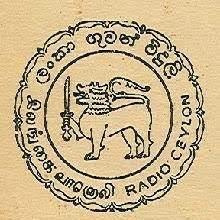
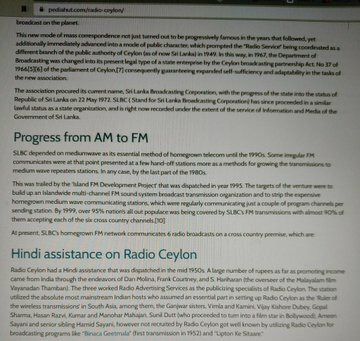


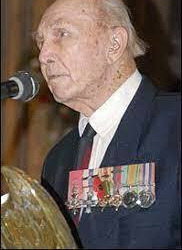

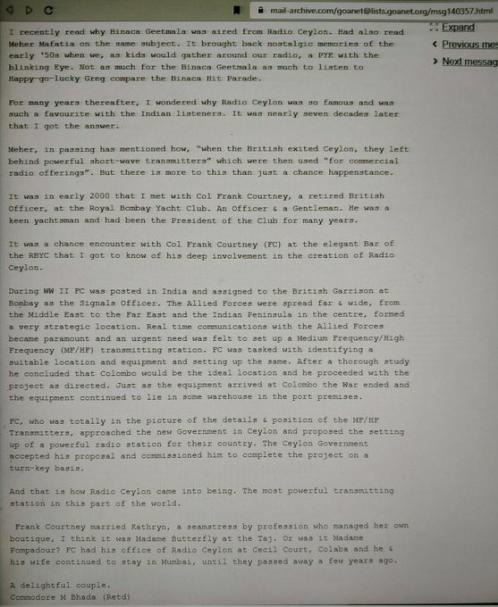

1 note
·
View note
Text
On All India Radio, Today Sudha Murthy was invited as a guest in a show " Aaj ke mehman" aired by Vividh Bharati . When RJ asked her choices of song , her list of choice was :
1. ' mudke na dekho Dilbaron" From Movie Raazi
2. "Nacho Nacho" From RRR
3. " Ankhiyon se Goli maare, Ladki Kamal re"
Her simplicity, no show off✨🌻❤
1 note
·
View note
Text
Ashtakvarga Ke Vividh Ayaam (Recorded Course)
Vedic Astrology Course: Ashtakvarga Ke Vividh Ayaam (Shri CS Patel Ji ke Sutro pe Aadharit)
Speaker: Upendra Singh Bhadoriya
Language: Hindi
Recording Available
Price:₹ 11,800.00
0 notes
Text
SAN FRANCISCO, April 18, 2023 /PRNewswire/ -- Kellton (NSE: KELLTONTEC), a leading digital technology services and solutions provider, recently launched Kverse Customer Experience Center and Innovation Lab in their Gurgaon, India office. The state-of-the-art center showcases Kellton's offerings in digital transformation, Cloud, IoT, Analytics, and AI, including Web3, and Metaverse technologies. Vividh Baru, SVP & Global Head - Digital Practice and P&L at Kellton, said, "We are thrilled to unveil the Kverse Customer Experience Center to showcase Digital Innovation and Transformation solutions to our clients. Our investment in the experience center aims to create a platform for us to ideate, design, and collaborate with our customers to co-create solutions tailored to their current and future business needs. The center features Interactive Smart displays, IoT platforms, Virtual and Augmented Reality Technologies, Metaverse and other Immersive environments, Blockchain, Voice Bots, and hands-on experiences based on Kellton and partner IP demonstrating our Digital Thought Leadership. As organizations around the world are looking to accelerate their Digital transformation journeys to deliver superior customer experience, optimize cost, and scale with agility; Kellton is doubling down its investments in Digital innovation to help drive customer success," adds Vividh. Kellton plans to leverage the center as an avenue to pilot and validate new customer experience models for real-world applications and use cases. Kverse creates a differentiated technology playground and canvas for Kellton's clients to explore and apply Innovative solutions in solving their business challenges and building sustainable competitive advantage. Demonstrations span Super Apps to Machine Learning Models, Digital Twins to Cloud Native Platforms, Strategic Design to Automated Support, Wearables to Web3. Kellton aims to launch Kverse Experience and innovation centers in the Americas and Europe, later this year. About Kellton: Kellton is a global technology consulting and IT services company founded on the belief of exploring 'Infinite Possibilities with Technology.' Kellton helps businesses of all sizes, ranging from startups, SMEs, and Fortune 500s, build disruptive digital solutions. With operations across the US, Europe, India, and the Asia Pacific and a global team of 1800+ employees, Kellton enables clients to use technology as their competitive advantage. Kellton has been placed four times on the Deloitte Technology Fast 50 India List and recognized by Forbes Asia as one of the Top 200 companies in their 'Best Under a Billion list'. Visit: www.kellton.com Contact: Sahil Bhushan Email: [email protected] Ph no: +91-999-010-4880 Photo: https://mma.prnewswire.com/media/2055558/Kverse_Experience_Center.jpg Logo: https://mma.prnewswire.com/media/1972840/Kellton_Logo.jpg View original content:https://www.prnewswire.com/in/news-releases/kellton-launches-its-global-customer-experience-and-innovation-lab-kverse-301799848.html Source link
0 notes
Text
Radio India FM & AM + Radio Online + (Radio Android Application 🇮🇳📻)
India is a diverse and vibrant country, and its radio landscape reflects this diversity. From national broadcasters to local community stations, there is a wealth of radio programming available in India to suit a variety of interests and preferences.
One of the most well-known national radio broadcasters in India is All India Radio (AIR). AIR operates a network of over 400 stations across the country, providing news, music, and cultural programming in a variety of languages. The flagship station of AIR is Vividh Bharati, which broadcasts popular music and entertainment programs.
Another major player in the Indian radio landscape is Radio Mirchi, which is owned by the Entertainment Network India Limited (ENIL). Radio Mirchi operates a network of FM stations across the country, playing a mix of popular music, celebrity interviews, and entertainment news. Other commercial radio stations in India include Red FM, Big FM, and Radio City.
In addition to the national and commercial broadcasters, India is also home to a thriving community radio sector. Community radio stations are run by local groups and organizations, and provide a platform for local voices and perspectives. These stations often focus on issues that are important to the local community, such as education, health, and environment.
Some popular community radio stations in India include Sangham Radio in Andhra Pradesh, which focuses on rural development and women's empowerment, and Radio Bundelkhand in Madhya Pradesh, which focuses on environmental and social issues in the region.
Overall, the Indian radio landscape is diverse and dynamic, offering a range of programming to suit a variety of interests and preferences. Whether you're looking for the latest music hits, in-depth news coverage, or cultural programming, there is sure to be a radio station in India that suits your needs. So why not tune in today and discover the rich tapestry of Indian radio programming?
SO, DOWNLOAD NOW APP!! 🔽🔽
✔✔ GOOGLE PLAY STORE: ▶ https://play.google.com/store/apps/details?id=com.alexto.radio.app.india
✔✔ AMAZON APP STORE: ▶ http://www.amazon.com/gp/mas/dl/android?p=com.alexto.radio.app.india
✔✔ SAMSUNG GALAXY STORE: ▶http://galaxystore.samsung.com/detail/com.alexto.radio.app.india
#radio#internet radio#radiostation#radio india#indian radio stations#radio india fm#radio india android#android#play store#amazon app store#samsung galaxy store
0 notes
Text

“In ankhon ki masti ke mastaane hazaaron hain In ankhon se waabasta afasaane hazaaron hain” Remembering #Khayyam Saab on his birth anniversary (18/02).
Here is a rare photograph of Khayyam while presenting a vishesh Jaimala programme in Vividh Bharati studios in 1976.
What are your favourite Khayyam songs?
4 notes
·
View notes
Text
बच्चों के आधार कार्ड को रखना है एक्टिव, तो बायोमिट्रिक अपडेशन ज़रूरी, वरना हो जायेगा इनएक्टिव
बच्चों के आधार कार्ड को रखना है एक्टिव, तो बायोमिट्रिक अपडेशन ज़रूरी, वरना हो जायेगा इनएक्टिव
पेरेंट्स अपने नवजात बच्चे का आधार बच्चे के डिस्चार्ज सर्टिफिकेट और माता पिता के आधार कार्ड के जरिये आधार कार्ड बनवाते हैं। मगर बहुत से पेरेंट्स को यह नहीं मालूम कि बच्चे के 5 साल के होने के बाद आधार कार्ड को बायोमिट्रिक अपडेट कराना जरूरी होता है। ऐसा नहीं होने पर आपका आधार ��नएक्टिव हो सकता है। निडर, निष्पक्ष, निर्भीक चुनिंदा खबरों को पढने के लिए यहाँ >> क्लिक <<करें आधार कार्ड जारी करने वाली…

View On WordPress
0 notes
Photo

Meet Naresh. Naresh hails from Chattisgarh and was disabled at Birth. He has been raised by a family in Mumbai and been here for around 20 years. In light of our upcoming diversity fair #Vividh that talks of equal employment for all, we began chatting and what struck us were his vivid dreams and infinite determination. A tailor who considers himself a designer, he has worked on a few films for costume design. Though driving a rickshaw for past few months now and leading a tough life, he said "pet kay liye kabhi rukna nahin chahiye". It was a Eureka Moment when he said No one should stop. Dreams must not stop for opportunities. Come and meet many such diverse voices at Vividh on July 28, 2019 at Nehru Centre. #CelebrateDifferences #NoWorkplaceDiscrimination #vividhcareerfair (at Bandra - Hill Road) https://www.instagram.com/p/Bz2fqrEJ94N0tTuIZx5AXKMcFg3cgRyslaPmtQ0/?igshid=xfieig6fulhh
0 notes
Text
Best Indian Restaurant in Perth
Vividh Indian Restaurant is conveniently located in the Perth, a secluded place to enjoy a meal away from the hustle and bustle of the city. We offer contemporary interpretations of classic Indian dishes in a modern exclusive setting with pleasant service. We are the best Indian food Dine-in / Takeaway in Perth city, Whether it’s dinner for two or larger gatherings for celebrations and events, Vividh Indian Restaurant is sure to please you with best Indian food in Perth that is easy not just to satisfy your taste buds but to provide you memorable moments with your special friends and family with your heavenly set and warm and pleasant services.
A Restaurant for complete ethnic & pure vegetarian family
We take the opportunity to welcome you to Vividh Indian Restaurant – Best Indian restaurant in Perth a Indian food restaurant in a lively ambiance. We offer a royal choice of cuisine: Indian fast-food and Indo-Chinese. All the items on the menu have been selected with all care, so as to offer variety and satisfaction for kind of taste. Enjoy the ambiance that will enrich your appetite, dine on delicious meals, and taste the unique Vividh Restaurant experience.
#Vividh Indian Restaurant#best indian restaurant in perth#Indian food restaurant perth#Best indian food in perth#Indian street food perth#Indian Vegetarian Restaurant Perth#Vegetarian restaurants in perth
1 note
·
View note